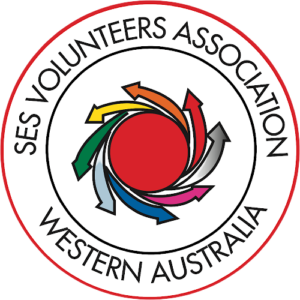National Medal – Australia’s most awarded medal
The National Medal recognises long and diligent service by members of recognised government and voluntary organisations that risk their lives or safety to protect or assist the community in enforcement of the law or in times of emergency or natural disaster. This includes government organisations such as ambulance, correctional, emergency, fire and police forces, and voluntary organisations such as lifesaving or search and rescue groups.
The National Medal, established in 1975, is Australia’s most awarded civilian medal. The National Medal is a circular bronze medal ensigned with the Crown of St Edward. The front of the medal features the Commonwealth Coat of Arms in a recessed circle. The rim of the medal carries the inscription ‘The National Medal’. The back of the medal is plain. Fifteen years’ service is required to qualify. Clasps are available for each additional ten years’ service.
Medal ribbon
The 32 millimetre-wide ribbon features 15 alternating gold and blue vertical stripes.
More information from:
https://www.pmc.gov.au/government/its-honour and additional information from the online DFES Volunteer Portal to registered volunteers and staff. Also the DFES Rewards and Recognition Officer (08) 9395 9520.
Emergency Services Medal
The Emergency Services Medal recognises distinguished service by members of emergency services across Australia, and people who are involved in emergency management, training or education. State emergency services and voluntary emergency organisations are eligible for the award. The Emergency Services Medal was introduced into the Australian system of honours in 1999.
Medal design
The central motif of the Emergency Services Medal is a raised equilateral triangle with bevelled edges. This is bordered by stylised sprays of wattle. The centre of the triangle features a raised impression of the Federation Star that is surrounded by twenty-four balls. The balls represent the twenty-four hours per day the Emergency Service is available to the community. The back of the medal has the inscription ‘For Distinguished Service’. The medal is silver and bronze colouring. Recipients are entitled to the post-nominal ESM.
Medal ribbon
The 32 millimetre-wide ribbon features a centre band of an orange and white checkerboard pattern, flanked on each outer edge by a royal blue band.
More information from: https://www.pmc.gov.au/government/its-honour/emergency-service-medal additional information from the online DFES Volunteer Portal to registered volunteers and staff. Also the DFES Rewards and Recognition Officer (08) 9395 9520.
Order of Australia
The Order of Australia is the pre-eminent way Australians recognise the achievements and service of their fellow citizens. Nominations for the the awards in the General Division of the Order of Australia come directly from the community. Nominations are considered by the Council for the Order of Australia which makes recommendations direct to the Governor-General.
Medal design
The design of the Medal of the Order of Australia is a badge with a gold-plated silver insignia of the Order in the centre. The central insignia is inscribed with the word ‘Australia’ in gold capital letters. The circle also contains two gold sprigs of mimosa. The insignia is ensigned with the Crown of St Edward. Recipients are entitled to the post-nominal OAM.
Medal ribbon
The medal is hung from the ribbon of the Order. It is royal blue with a central band of mimosa blossoms.
More information from: https://www.pmc.gov.au/government/its-honour/awards/order-australia

